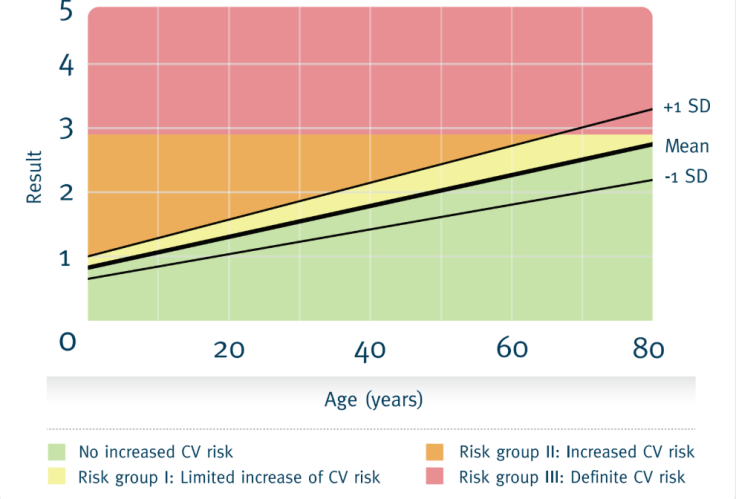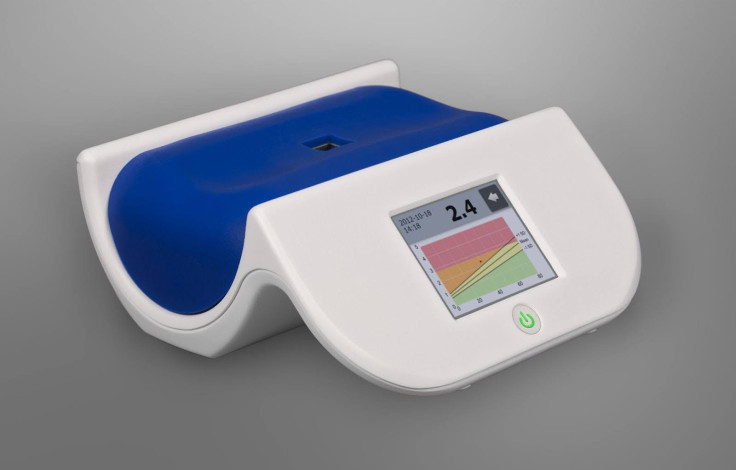Diagnoptics: Advancing Cardiovascular Risk Assessment Through Non-Invasive Innovation
Diagnoptics' AGE Reader helps detect long-term metabolic stress early, setting a new standard in cardiovascular and chronic disease risk assessment

Healthcare has seen significant progress, driven by technology that prioritises early detection, patient comfort, and evidence-based decision-making. In the assessment and management of chronic diseases, this evolution has been especially crucial. For instance, Diagnoptics, a medical technology company based in the Netherlands, has developed a unique approach to assessing metabolic and cardiovascular risk. Its innovation shows immense potential in reshaping how chronic disease progression is understood.
Founded in 2003, Diagnoptics has earned a reputation for equipping healthcare professionals with tools to detect early signs of disease through measuring Advanced Glycation End-products (AGEs) in human tissue. 'Our mission is to improve the standard of care in cardiovascular risk assessment,' says Diagnoptics CEO John Mulder. 'We do this by helping clinicians assess tissue glycation levels easily, quickly, and without invasive procedures.'

Diagnoptics' AGE reader, its flagship device, makes this happen. This compact medical device measures the accumulation of AGEs in the skin, providing an indicator of long-term metabolic stress. AGEs are the result when sugars in the body bind to proteins or fats. These compounds accumulate over time, particularly in individuals with metabolic disturbances such as diabetes, chronic kidney disease, or cardiovascular conditions.
'Elevated AGE levels have been associated with various age-related diseases,' Mulder explains. 'They're considered early markers of systemic damage before conventional symptoms or lab values reflect underlying problems.'

Diagnoptics' technology stands out for its non-invasive methodology. It doesn't rely on blood samples or tissue biopsies, which can be time-consuming, uncomfortable, and sometimes impractical. Instead, the AGE Reader utilises light. The device directs a specific wavelength of ultraviolet light into the skin, typically on the forearm. This light excites fluorescent molecules within the tissue, and the intensity of the returning fluorescence correlates with AGE accumulation in the collagen layer.
"Within a few seconds, clinicians can receive a readout that reflects the patient's AGE level. The insight obtained can guide further investigation, lifestyle counselling, or therapeutic action," Mulder states.

One of the key differentiators of the AGE Reader is the type of information it provides. Standard metrics such as blood glucose or HbA1c reflect short-term to medium-term metabolic status. Meanwhile, the AGE measurement captures a person's cumulative metabolic history. 'This means it can reveal the long-term effects of lifestyle, inflammation, and oxidative stress, even in those who may currently appear healthy,' Mulder remarks.
This expanded perspective offers several clinical advantages. In patient management, the AGE Reader can help stratify risk more accurately, especially in populations vulnerable to complications from diabetes or kidney disease. In professional health assessments, it can enhance workplace wellness programmes or general medical check-ups by identifying individuals with elevated metabolic stress. Even outside of clinical contexts, the device has found interest in areas such as skincare and anti-ageing.
This technology's origin stems from an observation in the mid-1990s. While conducting studies to assess vascular leakage in diabetes patients using a fluorescent dye, researchers noticed an unexpected signal even before the dye was administered. Intrigued, they explored the source of this background fluorescence. They discovered the correlation between tissue fluorescence and AGE levels. This established the foundation for the AGE Reader.
Following this initial discovery, extensive validation work began. Researchers collected tissue biopsies and compared them with the fluorescence data captured by early prototypes of the AGE Reader. The results demonstrated a relationship between AGE levels in skin and those found via laboratory analysis. Further studies established reference values and determined the threshold levels at which AGE accumulation posed increased health risks. These findings formed the clinical framework supporting the device's diagnostic use.
Over the past two decades, Diagnoptics has steadily advanced its technology. The latest model integrates with digital platforms, enabling clinicians to generate comprehensive cardiovascular risk reports and track changes over time. The device has also gained regulatory approvals in multiple markets, including the UK, and is now used in a range of clinical and research settings.
Committed to transparency, Diagnoptics shares the limitations of its technology. The current device operates optimally on skin types classified as Fitzpatrick I to IV. 'We're actively working on expanding its capability to assess AGEs in Fitzpatrick types V to VI reliably,' Mulder assures. 'We're conducting ongoing research to overcome the physical challenges posed by higher melanin levels.'
As Diagnoptics continues to refine its technology and extend its clinical reach, the company remains focused on supporting clinicians in identifying risk earlier, managing disease more effectively, and improving long-term health outcomes. It represents an essential shift in how chronic disease risk may be assessed and managed.
© Copyright IBTimes 2025. All rights reserved.





















